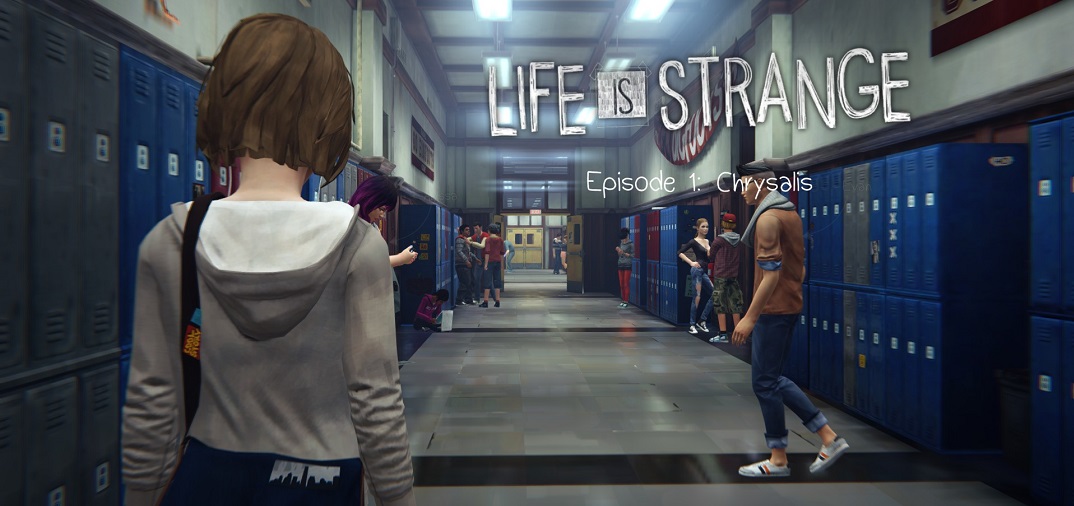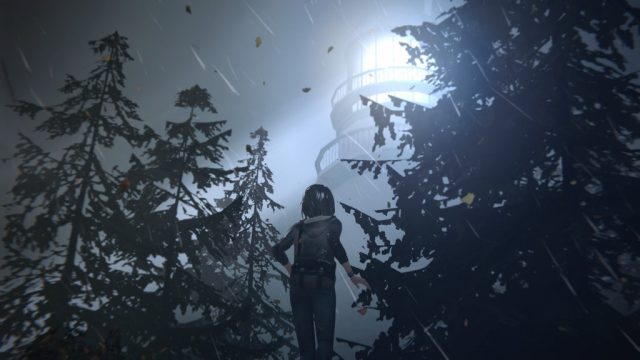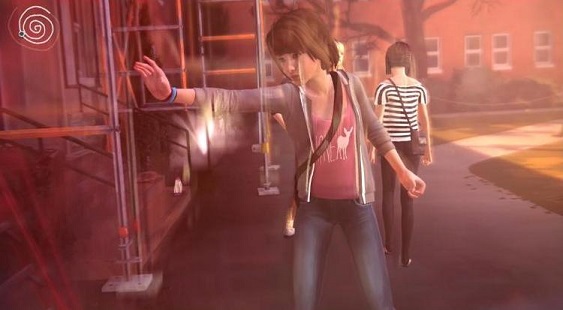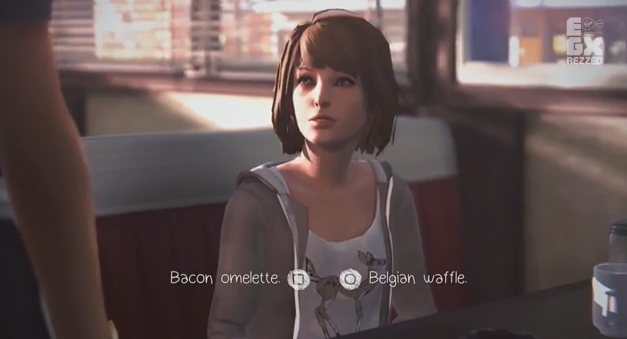
Website: http://store.steampowered.com/app/319630/
Gameplay: https://www.youtube.com/watch?v=9ix_Mfmjs5s
‘Life is Strange’ is an episodic 3D adventure game released in 2015. In this game you play as Max, a photography student who mysteriously gained the ability to rewind time after she witnessed a murder. With her newfound power, Max tries to find out more about the odd happenings that have been going on in her town, Arcadia Bay.
Lens #7: The Lens of the Elemental Tetrad
Story
- This is a very plot-driven game, where every player choice determine how the narrative unfolds. I think the story is undeniably the biggest part of this game.
- Unlike other choose-your-adventure games, what makes this game special is the ability to rewind time. With this superpower, the player can go back in time to redo an action, or to see how each choice leads to a different outcome, without having to load a savegame or replay the level.
- As the game progresses, the player will be introduced to many different characters and get to know more about them. Many players will find themselves developing a sense of attachment to several of the characters, which may influence some of the choices that they make later on in the game.
- The story also examines several sensitive issues, such as bullying, environmental
changes, and mental health, and interweave them brilliantly with the plot
Mechanics
- Throughout the game, the player gets to explore various locations, interact with objects and talk to non-playable characters. This allows the player to know more details about the game’s world and characters, some of which are relevant to the story and can aid the player in making choices.
- The player’s ability to rewind time is an interesting mechanic and one of the selling-points of the game. The player is often encouraged to rewind time to change certain events or solve certain puzzles.
- The player can rewind anytime when in control of the character Max. This gives the player the freedom to experiment with time travel and discover different possible outcomes.

Aesthetics
- Overall, this game has a very beautiful and consistent aesthetic. Although the game does not have top-notch photo-realistic graphics, the game’s environment is still very pretty, colourful and detailed. I will say this game has a cartoon-ish but somewhat realistic look, that exhibits a warm feeling and is easy on the eye.
- Every time the player interacts with objects and characters, they will be able to listen to Max’s inner thoughts, which is a thing that very few games have. This really helps to bring out Max’s character and make the player relate to her.
- The voice-acting in this game is very well-done. So good that all the characters in this game, even the minor ones, feel very expressive and authentic, despite the rather stiff facial expressions and movements of the character models.
- Finally, the soundtracks in this game are terrific and perfectly fit the atmospheres of the scenes that each of them are used in. It truly is the icing on the cake that makes this game feels like a cinematic experience.
Technology
- The game’s 3D environment allows the developers to really flesh out the game’s world, in a way that they could not have done had the game been made in 2D or as a visual novel. Just being able to walk around in a 3D world and look at stuffs makes the game’s setting feel much more immersive and like a real place.

Lens #2: The Lens of Surprise
- Like every other story involving time travel, the story of this game is mind-blowing and full of unexpected twists.
- The theme of the game revolves a lot around the butterfly effect (the concept that a small change can have a very large effect). At many points in the game, the player will get to see how a small change of action in the past can have a profound impact on the game’s world.
- The choices that the player makes can have big or small effects on the story, but the full effect of a choice is often only played out in the long term. The player may be surprised by how a seemingly small choice that was made early in the game can have an unexpected consequence in a later part of the game!
- Episode 1 of the game (now FREE to play!) has a different, laid-back atmosphere compared to the rest of the game, which may give some players a false impression of what the game is truly like. In Episode 1, the story feels like an average teen drama with only a hint of time travel. Episode 2 and beyond is where the story takes a dark turn and gets really interesting. By the end of Episode 2, you will be tempted to say “well that escalated quickly”.
Lens #4: The Lens of Curiosity
- Most players will find themselves hooked by the storyline and be curious to find out what happens next.
- It also helps that the game has an episodic format, where each episode ends with a big reveal or cliffhanger that leaves the player yearning for more.
- There is an overarching plot in the game that involves solving a mystery. Players will uncover more information through their investigations, and be thirsting to find out the truth behind all the strange happenings.
- With the time travel element, it is especially hard for the player to predict how the
plot will unfold, as the story becomes increasingly convoluted. Players will keep
guessing till the end as they follow Max’s adventure through time and space.

Lens #3: The Lens of Fun
- The time-rewind mechanic is very fun to play with. The player can redo an action as many time as desired before moving on. And as Max rewinds, the player sees the entire game world reversing in time, including people walking backwards.
- The game utilizes the time-rewind mechanic to create many interesting scenarios. There are various small puzzles that require the player to rewind in order to solve them. The power also allows the player to teleport (as the protagonist Max is unaffected by her own rewind), adding another fun layer to the puzzles.
- The player can also make use of time-rewind to manipulate some characters. For example, the player can talk to a character to learn some useful information about the person; the player may then go back to time and use the new information to change the conversation and impress the person.

Lens #32: The Lens of Meaningful Choices
- This game is all about making choices; even a small optional action by the player
may constitutes a choice. - Every choice that the player makes will cause the plot to branch out into different scenarios. Whenever the player makes a choice, The game will inform the player that the action will have consequences.
- Whether is it a major choice or a minor choice, every choice will have some form of impacts that will manifest at a later part of the game. Even watering your plant will have consequences!
- Game encourages player to take time to think before making major choices. Some of them have very significant consequences that will determine the fate of certain characters, or change the relationship the protagonist has with certain characters.
- There are no right or wrong choices – some scenarios purposely present the player with moral dilemmas that will make the player struggle to even make a choice, while some choices are designed such that it is not possible to have a win-win situation.
- In any case, player should think about both the short-term and the possible long-term effect a choice can have, and decide for him/herself which is the best choice.
